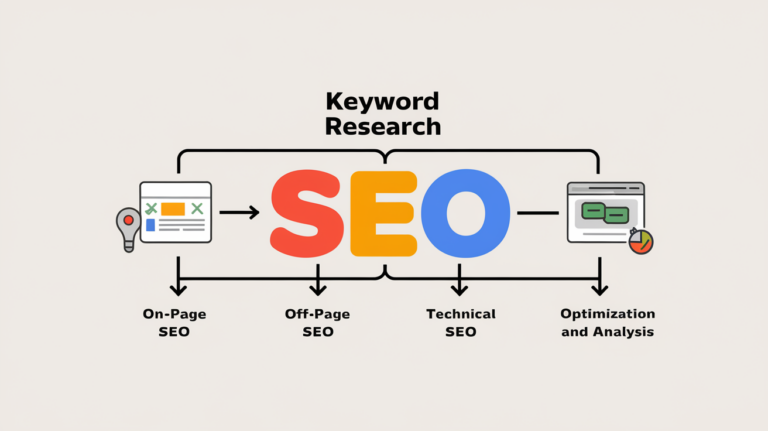SEO Laxative A Revolutionary Technique to Cut Through the SEO Bullshit
SEO Laxative Technique
In the ever-evolving world of digital marketing, SEO has grown into a labyrinth of tactics, acronyms, and—let’s be honest—a whole lot of bullshit. Amid this clutter, a new philosophy is emerging that promises to purge your site of outdated practices and manipulative tactics. Enter SEO Laxative—a methodology designed to cleanse your digital presence and restore its natural, user-first essence.
In this detailed article, we’ll explore what SEO Laxative is, why it matters, how it works, and how you can implement it to transform your SEO strategy. Additionally, we’ll examine the importance of Entities and Topical MAPS in modern SEO and how they integrate seamlessly into the SEO Laxative philosophy.
The Problem with Traditional SEO
For years, SEO has been dominated by practices that prioritize gaming algorithms over serving genuine value to users. From keyword stuffing and cloaking to manipulative link-building schemes, many strategies have focused more on tricking search engines than on enhancing user experience. This has led to several significant issues:
- Cluttered Content: Websites become overloaded with repetitive keywords, low-quality links, and irrelevant jargon, making the content less appealing to readers.
- User Frustration: When content is optimized solely for search engines, it often sacrifices readability and utility, leading to higher bounce rates and lower engagement.
- Algorithm Updates: As search engines like Google continually refine their algorithms, outdated or “black-hat” techniques can backfire, resulting in severe ranking penalties.
The result? A bloated SEO ecosystem where valuable content gets lost in the noise—a prime breeding ground for what many refer to as “SEO bullshit.”
What Exactly Is SEO Laxative?
A Fresh Approach to SEO
SEO Laxative is a conceptual framework and actionable strategy aimed at “flushing out” the clutter and deceptive practices that have overrun traditional SEO. Just as a laxative clears the digestive tract, SEO Laxative works to purge your website of unnecessary, outdated, and manipulative SEO tactics, leaving behind a clean, user-friendly foundation that both people and search engines appreciate.
The Philosophy Behind It
At its core, SEO Laxative is built on two fundamental principles:
- Simplicity Over Complexity: Prioritize clear, honest, and high-quality content over convoluted keyword strategies and manipulative practices.
- User-First Mindset: Shift the focus from trying to exploit search engine algorithms to genuinely serving your audience’s needs.
By embracing these principles, SEO Laxative advocates for a streamlined approach that benefits your site’s long-term performance rather than offering a quick fix.
How SEO Laxative Works
SEO Laxative isn’t a magic pill—it’s a comprehensive strategy that involves auditing, cleaning, and restructuring your current SEO practices. Here’s how it works:
1. Content Audit and Analysis
Before you can purge the unwanted SEO clutter, you need to know what’s clogging your system. Start with a full-scale audit of your website to identify:
- Keyword Stuffing: Excessive or unnatural keyword usage that might have once been a ranking booster but now reads as spam.
- Outdated Tactics: Legacy practices such as excessive meta-tag manipulation, doorway pages, or other black-hat techniques that could be harming your rankings.
- Low-Quality Content: Pages that were created solely to serve search engines rather than provide meaningful value to users.
2. Cleansing Outdated Practices
Once you’ve identified the problem areas, the next step is to “cleanse” your website. This involves:
- Removing or Updating Content: Delete or update pages that are no longer relevant or that employ outdated SEO tactics.
- Streamlining Keyword Use: Replace excessive keyword repetitions with naturally flowing language that reads well and provides genuine value.
- Revamping Link Strategies: Audit your backlink profile to remove or disavow low-quality links, focusing instead on building natural, high-authority connections.
3. Rebuilding with a User-First Focus
With your site cleansed of the excess, rebuild your SEO strategy with the user in mind:
- High-Quality Content Creation: Develop content that answers real questions, solves problems, and engages your audience.
- Transparent Practices: Use clear, straightforward language both for users and for search engines. Avoid “hidden” text or other deceptive tactics.
- Responsive Design and UX: Ensure your site is easy to navigate, fast-loading, and optimized for all devices. User experience is a critical ranking factor in today’s SEO landscape.
4. Monitoring and Iteration
SEO isn’t a set-it-and-forget-it process. With SEO Laxative, continuous monitoring is key:
- Analytics Tracking: Use tools like Google Analytics and Search Console to monitor your site’s performance and user engagement.
- Regular Audits: Periodically re-audit your site to catch any new SEO clutter before it builds up.
- Adaptation: As search engines evolve, adjust your strategies to maintain a clean, user-focused approach.
Implementing SEO Laxative: A Step-by-Step Guide
Ready to flush out the SEO clutter from your website? Follow these steps to implement the SEO Laxative strategy:
Step 1: Conduct a Comprehensive SEO Audit
- Use SEO Tools: Leverage tools such as Screaming Frog, Ahrefs, or SEMrush to crawl your site and identify areas with keyword stuffing, broken links, or outdated tactics.
- Review Content Quality: Manually assess content pages for readability, value, and relevance.
- Examine Backlinks: Identify and analyze low-quality or spammy backlinks that could be dragging down your site’s authority.
Step 2: Purge and Revise
- Clean Up Content: Remove or update pages with thin, outdated, or overly optimized content.
- Optimize On-Page Elements: Refine meta titles, descriptions, headers, and body text to be natural and engaging without overloading on keywords.
- Rebuild Internal Linking: Ensure that your internal linking structure is logical, user-friendly, and free of manipulative practices.
Step 3: Shift to a User-First Content Strategy
- Create Quality Content: Focus on producing articles, videos, infographics, and other media that offer real value and are written in a conversational, approachable tone.
- Encourage Engagement: Incorporate interactive elements like comments, forums, or social sharing buttons to build community and trust.
- Prioritize Accessibility: Make sure your website is accessible to all users, including those with disabilities, by following best practices for web accessibility.
Step 4: Monitor, Analyze, and Iterate
- Set Up Regular Check-Ins: Schedule regular audits and reviews to ensure that your SEO remains clean and effective.
- Adapt to Changes: Keep an eye on industry trends and algorithm updates to tweak your strategy as needed.
- Celebrate Progress: Track improvements in user engagement, bounce rates, and rankings to validate the benefits of your cleaner SEO approach.
Entities and Topical MAPS: Enhancing Your SEO Laxative Strategy
As you work to purge your website of outdated SEO tactics, integrating modern strategies is essential to stay ahead. Two critical components that can elevate your SEO Laxative approach are Entities and Topical MAPS.
The Role of Entities in Modern SEO
Search engines have evolved to understand and leverage entities—unique, identifiable subjects such as people, places, organizations, or concepts—to provide richer and more contextually relevant search results. By aligning your content with recognized entities, you can:
- Enhance Relevance: Clearly defined entities help search engines match your content with user queries that have similar contexts.
- Boost Credibility: Associating your content with authoritative entities builds trust with both search engines and your audience.
- Improve Semantic Understanding: Moving beyond traditional keyword matching, entities allow search engines to grasp the full meaning of your content, ensuring it remains relevant even when phrasing varies.
In practice, integrating structured data and schema markup to highlight these entities can make your content more machine-readable and contextually robust, directly contributing to the SEO Laxative philosophy of a clean, transparent, and user-first approach.
Building a Topical Map for Comprehensive Content Coverage
Topical MAPS serve as blueprints for how your content interconnects, illustrating the breadth and depth of coverage around a subject. A well-constructed topical map can:
- Demonstrate Authority: When you cover a topic thoroughly through interconnected pieces of content, search engines recognize you as an expert on the subject.
- Enhance Internal Linking: A clear topical structure promotes logical internal links that guide users through your site, improving both navigation and link equity distribution.
- Guide Future Content: Topical maps reveal content gaps and opportunities, ensuring that your website remains comprehensive and continuously aligned with user intent.
By organizing your content into a coherent topical map—complete with pillar pages for overarching topics and cluster pages for in-depth subtopics—you not only create a better user experience but also signal to search engines that your site is a rich, well-organized resource.
Integrating Entities and Topical Maps with SEO Laxative
Merging the SEO Laxative strategy with a strong focus on entities and topical maps creates a holistic approach that addresses both the technical and semantic aspects of SEO. Here’s how to integrate them:
- Audit Your Content for Key Entities: Review your existing content to identify the primary entities discussed. Enhance your pages with structured data to clearly define these subjects.
- Develop a Visual Topical Map: Create a map outlining your main content pillars and the supporting subtopics. Use this as a guide for content creation and internal linking.
- Prioritize Semantic Richness: Ensure that your refreshed content not only avoids outdated practices but also communicates contextually rich information by linking related entities and topics.
By embracing entities and topical maps, you create an environment where content is both user-friendly and easily understood by search engines—an essential evolution of the SEO Laxative philosophy.
Real-World Examples & Case Studies
While SEO Laxative is still an emerging philosophy, several organizations have inadvertently embraced its principles by shifting away from manipulative tactics:
Example 1: The Content-First Retailer
A mid-sized e-commerce company once relied heavily on keyword stuffing and mass-produced content. After a significant drop in organic traffic following a search engine algorithm update, they overhauled their strategy. By removing redundant content, implementing a clear topical structure, and emphasizing entity-driven content through authoritative references and schema markup, the company experienced:
- A 35% increase in organic traffic.
- Improved user engagement and longer on-site times.
- A revitalized brand reputation built on trust and quality.
Example 2: The Niche Blog Transformation
A niche blog in the health and wellness sector was notorious for over-optimizing its posts with excessive keywords and filler content. The site’s traffic plateaued as readers found the articles dry and robotic. By adopting an SEO Laxative approach—restructuring content around a clear topical map and reinforcing key entities—the blog:
- Eliminated unnecessary SEO jargon and refocused on genuinely informative content.
- Increased reader retention by 40% with a more engaging, interconnected content strategy.
- Garnered organic backlinks from reputable sources, further boosting its search rankings.
These case studies illustrate that cleaning out the “SEO crap” while integrating modern elements like entities and topical maps can lead to more sustainable, long-term success.
Benefits and Limitations
Benefits
- Improved User Experience: By prioritizing clear, valuable content enhanced with structured entity data and logical topical organization, users are more likely to engage with your site.
- Long-Term SEO Gains: Natural, high-quality content and ethical practices are more resilient to algorithm changes.
- Enhanced Credibility: A transparent, user-first approach that leverages recognized entities and comprehensive topical maps builds trust with both your audience and search engines.
- Reduced Risk of Penalties: Avoiding manipulative tactics minimizes the risk of severe penalties from search engine updates.
Limitations
- Gradual Results: Unlike quick-fix tactics, the benefits of SEO Laxative—especially when incorporating semantic elements like entities and topical maps—build over time.
- Resource Intensive: Conducting thorough audits, mapping topics, and updating content may require a significant upfront investment in time and resources.
- No One-Size-Fits-All: What works for one website might not be applicable to another. Tailoring the approach to your unique situation is essential.
Conclusion: Embracing a Cleaner SEO Future
In a digital landscape overloaded with SEO gimmicks and shortcuts, SEO Laxative offers a refreshing alternative. By focusing on cleansing your website of outdated practices and emphasizing quality, user-first content enhanced by strategic use of entities and topical maps, you’re not only improving your search engine rankings—you’re fostering genuine engagement and building a sustainable online presence.
While the name might be tongue-in-cheek, the philosophy behind SEO Laxative is both practical and timely. As search engines become increasingly sophisticated, the days of relying on manipulative tactics are over. Instead, it’s time to embrace strategies that serve your audience, deliver real value, and create a content ecosystem that is logically structured and semantically rich.
So, if you’re ready to flush out the SEO bullshit and start building a website that truly resonates with users (and search engines), consider an SEO Laxative approach. Cleanse your site, integrate entities and topical maps, clear your strategy, and watch as your digital presence breathes new life.
Embrace the change—sometimes, a little cleansing is all you need to transform your SEO from clogged and chaotic to clear, compelling, and contextually intelligent.



